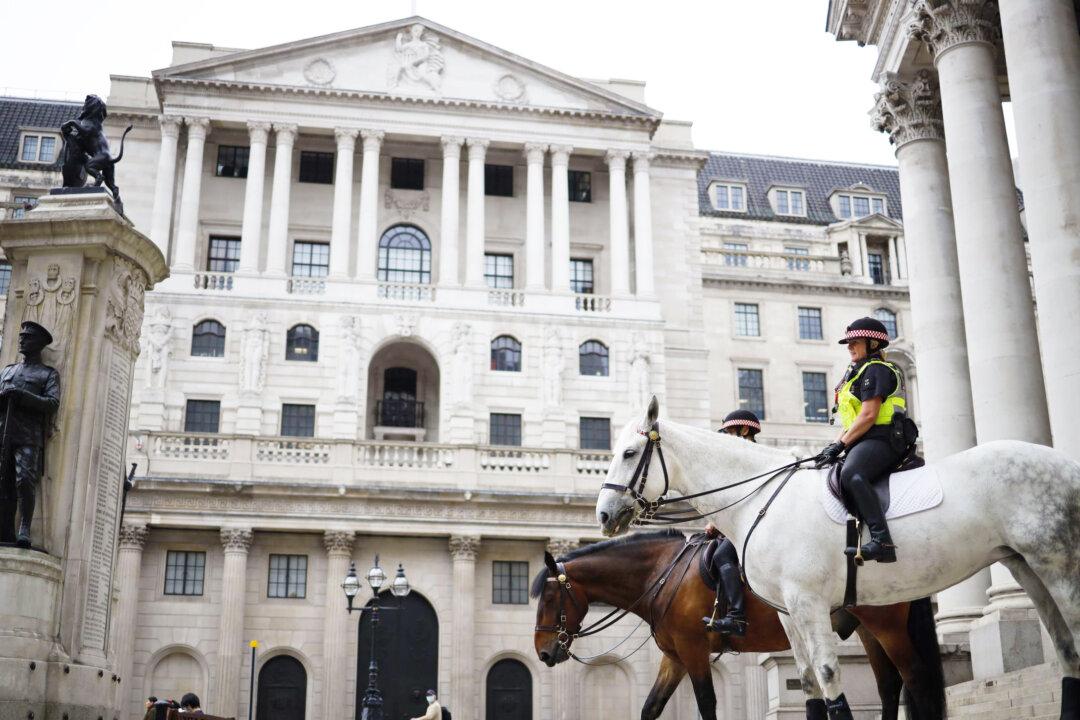LONDON—The Bank of England has asked commercial banks whether they are ready for negative interest rates, signaling that the central bank is moving closer to cutting its key interest rate below zero.
If the benchmark rate were cut to less than zero, from the current 0.1 percent, commercial banks would have to pay the Bank of England to hold deposits for them. Policy makers have previously indicated that they were willing to consider negative interest rates amid the economic pressures caused by the COVID-19 pandemic.





